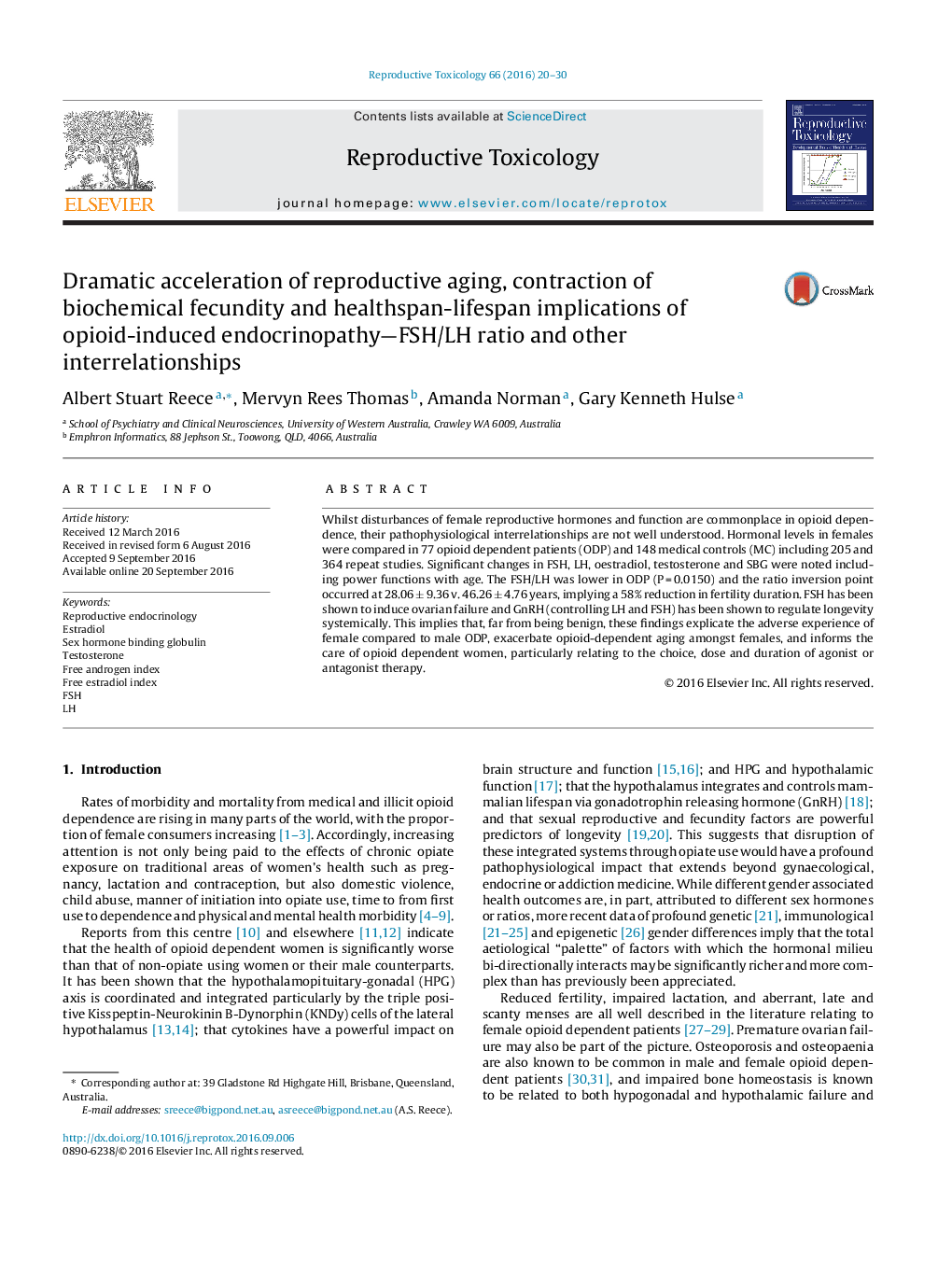| Article ID | Journal | Published Year | Pages | File Type |
|---|---|---|---|---|
| 5561612 | Reproductive Toxicology | 2016 | 11 Pages |
â¢The classical opioid induced female reproductive endocrinopathy - central dysregulation and peripheral ovarian resistance - is confirmed.â¢Advance of the age of the inversion of the ratio of FSH/LH by 18.06 years from 46.26 + 4.76 to 28.06 + 9.36 is demonstrated by statistical modelling.â¢This important finding is likely related to the increased severity of opioid induced pathology in females compared to males.â¢It has major implications for the incidence of morbidity and mortality events.â¢The well known hyperprolactinaemia of opioid dependency has recently been linked as a key cellular signalling pathway in ageing.
Whilst disturbances of female reproductive hormones and function are commonplace in opioid dependence, their pathophysiological interrelationships are not well understood. Hormonal levels in females were compared in 77 opioid dependent patients (ODP) and 148 medical controls (MC) including 205 and 364 repeat studies. Significant changes in FSH, LH, oestradiol, testosterone and SBG were noted including power functions with age. The FSH/LH was lower in ODP (P = 0.0150) and the ratio inversion point occurred at 28.06 ± 9.36 v. 46.26 ± 4.76 years, implying a 58% reduction in fertility duration. FSH has been shown to induce ovarian failure and GnRH (controlling LH and FSH) has been shown to regulate longevity systemically. This implies that, far from being benign, these findings explicate the adverse experience of female compared to male ODP, exacerbate opioid-dependent aging amongst females, and informs the care of opioid dependent women, particularly relating to the choice, dose and duration of agonist or antagonist therapy.
Graphical abstractDownload full-size image
